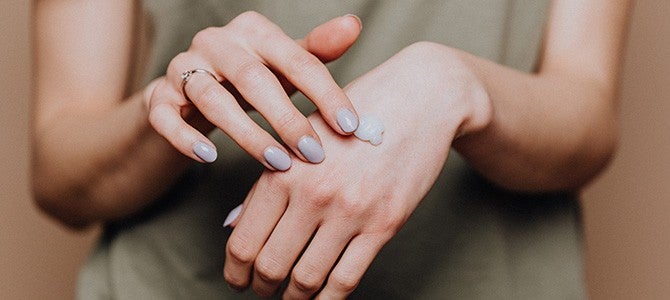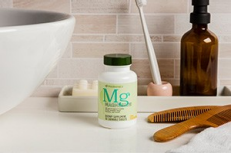Adaptogens in Skin Care
April 09, 2021

Nu Skin is no stranger to adaptogens. Within our Pharmanex products adaptogenic ingredients have been leveraged for years! But what exactly are adaptogens?
What are adaptogens?
The commonly agreed upon definition for adaptogens are substances that help the body adapt to or resist stress. These substances usually come from botanical sources. Adaptogens have three things in common, each
- is nontoxic
- reduces the body’s stress response
- supports overall health by helping your body achieve balance
Usually found in the diet as either supplements or food items, adaptogens help the body adapt to varying types of stress—physical, emotional, etc. They aid in helping stave off fatigue, build endurance, or improve focus while others can help with feelings of relaxation or calmness.
Adaptogens for the skin
The skin is also exposed to an array of stressors. These types of stressors can come from a diet that favors fat, sugars, or processed foods,1,2 as well as lack of sleep3 and environmental pollution2, which includes smoking and tobacco products.2 These stressors can cause the skin to exhibit signs of premature aging—more wrinkles,4,5,7 droopy/swollen skin4, dyspigmentation/age spots6,7 to simply looking fatigued and less vibrant. Yet adaptogens, with their antioxidant-like capacity, can help skin resist these sources of oxidative stress offsetting the potential damage and helping it to find a balance.
Are adaptogens effective on the skin?
To illustrate this, research was conducted on three different formulas—a serum, cream and night mask—all formulated with adaptogens. Each was able to decrease the oxidative damage from UV exposure when compared to untreated sites.
This was found in the development of apoptotic cells (cells that are preparing to die) and when measured with a dermaspectrophotometer after UV exposure. (A dermospectrophotometer is used to assess skin color including redness.)
Adaptogens found in skin care
Each of the formulas, from the study above, contained the same blend of five different adaptogen extracts taken from plants that have adapted to their uniquely harsh environments in order to thrive. These extracts consisted of:
Rhodiola—survives year-round in wild arctic areas and high altitudes where the oxygen is thin, and the temperatures can dip as low as -40°C.
Maral Root—flourishes in high alpine meadows that are often an inhospitable 4,500–6,000 ft (1,400–1,800 m) above sea level.
Siberian Ginseng—thrives in mountain forests and all kinds of soils, including sandy, loamy, and heavy clay soils with acid, neutral, or alkaline chemistry and soils of low nutritional value.
Chaga Mushroom—grows wild on trees in the polar deserts and tundras of Canada, Alaska, and Russia.
Resurrection Plant—springs back to life without damage after months—or even years—of extreme dehydration.

These special properties that allow the plants to survive in their severe climates and environments can help skin adapt to its changing and unique situations.
Not all adaptogens are extremophiles—found living in extreme environmental conditions. Theobroma Cacao Seed Extract, another example of an adaptogen, can provide skin benefits topically. This unique extract from non-fermented cocoa seeds was developed to help protect skin from the effects of blue light exposure. Blue light exposure can come from computers, smart phones, and tablets.
Additional research further illustrated that it can also help protect skin from the damaging effects of oxidative stressors. Taking an in vitro approach, this extract was evaluated on a gene expression panel to identify its ability to mitigate genes associated with stress compared to control. The results showed that this extract indeed was able to regulate genes associated with stress in the skin.
While adaptogens have been used historically in diet to promote overall wellbeing, the unique benefits of this ingredient classification can be extended to topical applications as well. Topical applications of adaptogens can help the skin adapt more efficiently to different stresses. Offsetting stress and subsequent damage can then help skin maintain its youthful beauty.
References:
- Pizzino G, Irrera N, Cucinotta M, et al. Oxidative Stress: Harms and Benefits for Human Health. Oxid Med Cell Longev. 2017;2017:8416763. doi:10.1155/2017/8416763
- Mirmiran P, Hadavi H, Mottaghi A, Azizi F. Effect of dietary patterns on oxidative stress in Patiants with metabolic syndrome: Tehran Lipid and Glucose Study. Caspian J Intern Med. 2018;9(4):376-385. doi:10.22088/cjim.9.4.376
- Jówko E, Różański P, Tomczak A. Effects of a 36-h Survival Training with Sleep Deprivation on Oxidative Stress and Muscle Damage Biomarkers in Young Healthy Men. Int J Environ Res Public Health. 2018;15(10):2066. Published 2018 Sep 20. doi:10.3390/ijerph15102066
- Sundelin T, Lekander M, Kecklund G, Van Someren EJ, Olsson A, Axelsson J. Cues of fatigue: effects of sleep deprivation on facial appearance. Sleep. 2013;36(9):1355-1360. Published 2013 Sep 1. doi:10.5665/sleep.2964
- Rinnerthaler M, Bischof J, Streubel MK, Trost A, Richter K. Oxidative stress in aging human skin. Biomolecules. 2015;5(2):545-589. Published 2015 Apr 21. doi:10.3390/biom5020545
- Araviiskaia E, Berardesca E, Bieber T, et al. The impact of airborne pollution on skin. J Eur Acad Dermatol Venereol. 2019;33(8):1496-1505. doi:10.1111/jdv.15583
- Amaro-Ortiz A, Yan B, D'Orazio JA. Ultraviolet radiation, aging and the skin: prevention of damage by topical cAMP manipulation. Molecules. 2014;19(5):6202-6219. Published 2014 May 15. doi:10.3390/molecules19056202
-
Market research has shown that 47% of women pay more attention to the ingredients used in their beauty products than they did a year ago1. It has also been found that 49% of US adults ages 18-24 look for clean beauty products. But what exactly is “clean” skin care? Clean skin care, or clean beauty, is a movement within the personal care industry that focuses on a specific product philosophy. Some ...
-
Magnesium (Mg) is an essential mineral that our bodies need in order to function properly. It’s also the seventh most abundant element in the Earth’s crust and is one of the most common electrolytes found inside of our body’s trillions of cells. Our body contains a whopping 25 grams of magnesium, mostly stored in our bones and muscle tissue. Let’s take a deeper look at magnesium, what it does, the...

